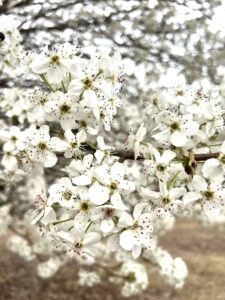NC Bradford Pear Bounty
go.ncsu.edu/readext?853860
en Español / em Português
El inglés es el idioma de control de esta página. En la medida en que haya algún conflicto entre la traducción al inglés y la traducción, el inglés prevalece.
Al hacer clic en el enlace de traducción se activa un servicio de traducción gratuito para convertir la página al español. Al igual que con cualquier traducción por Internet, la conversión no es sensible al contexto y puede que no traduzca el texto en su significado original. NC State Extension no garantiza la exactitud del texto traducido. Por favor, tenga en cuenta que algunas aplicaciones y/o servicios pueden no funcionar como se espera cuando se traducen.
Português
Inglês é o idioma de controle desta página. Na medida que haja algum conflito entre o texto original em Inglês e a tradução, o Inglês prevalece.
Ao clicar no link de tradução, um serviço gratuito de tradução será ativado para converter a página para o Português. Como em qualquer tradução pela internet, a conversão não é sensivel ao contexto e pode não ocorrer a tradução para o significado orginal. O serviço de Extensão da Carolina do Norte (NC State Extension) não garante a exatidão do texto traduzido. Por favor, observe que algumas funções ou serviços podem não funcionar como esperado após a tradução.
English
English is the controlling language of this page. To the extent there is any conflict between the English text and the translation, English controls.
Clicking on the translation link activates a free translation service to convert the page to Spanish. As with any Internet translation, the conversion is not context-sensitive and may not translate the text to its original meaning. NC State Extension does not guarantee the accuracy of the translated text. Please note that some applications and/or services may not function as expected when translated.
Collapse ▲
Bradford pear tree in full bloom. Image by Dr. Kelly Oten.
The Bradford pear tree is an ornamental commonly planted tree in North Carolina but did you know it is an invasive species? Sure, it has pretty blossoms, but it also smells of rotten fish, breaks easily during storms, and outcompetes native trees. Bradford pears can also breed with other varieties of pear trees that produce long thorns and spread in natural forests, replacing native trees and creating “food deserts” for birds. These trees are damaging to our natural ecosystems and need to be removed and replaced.
You’ll see their characteristic white blooms in full effect in March or early spring.
We’re teaming up with the NC Forest Service, NC Urban Forest Council, and NC Wildlife Federation to encourage North Carolinians to properly remove and replace these invasive trees.

Image of white Bradford pear blooms. Image by Dr. Kelly Oten.
When you cut down your Bradford pear tree, we’ll give you a native tree to replace it (up to 5 native trees)! You must sign-up and provide proof of removal to attend an NC Bradford Pear Bounty event and receive native trees.
*We are planning events in various locations across NC. Specifc dates and locations can be found on treebountync.com
The property owner is responsible for tree removal. You may choose to remove it yourself or hire a professional (find a Certified Arborist). Some organizations are also offering discounts on the removal of these trees (find a partnering organization). Stumps should be treated with an herbicide to prevent resprouting. Don’t forget to take before and after photos to act as proof of removal.
Find answers to frequently asked questions, events, what native trees may be provided, how to register, and more on treebountync.com.
For more about Bradford pears and related cultivars, check out this NC State Extension publication.
Another great article to read for more information on this invasive species and the bounty offered is this article from NC State CNR with Dr. Kelly Oten, NC State Assistant Professor and Extension Specialist in Forest Health.


